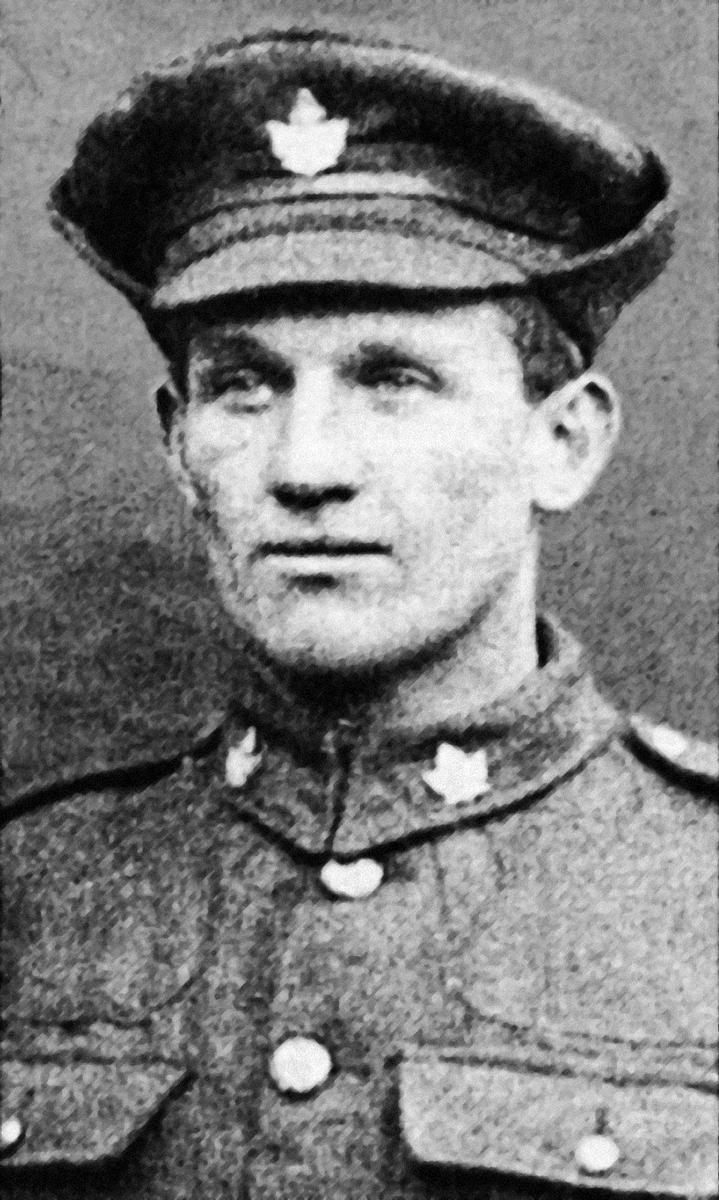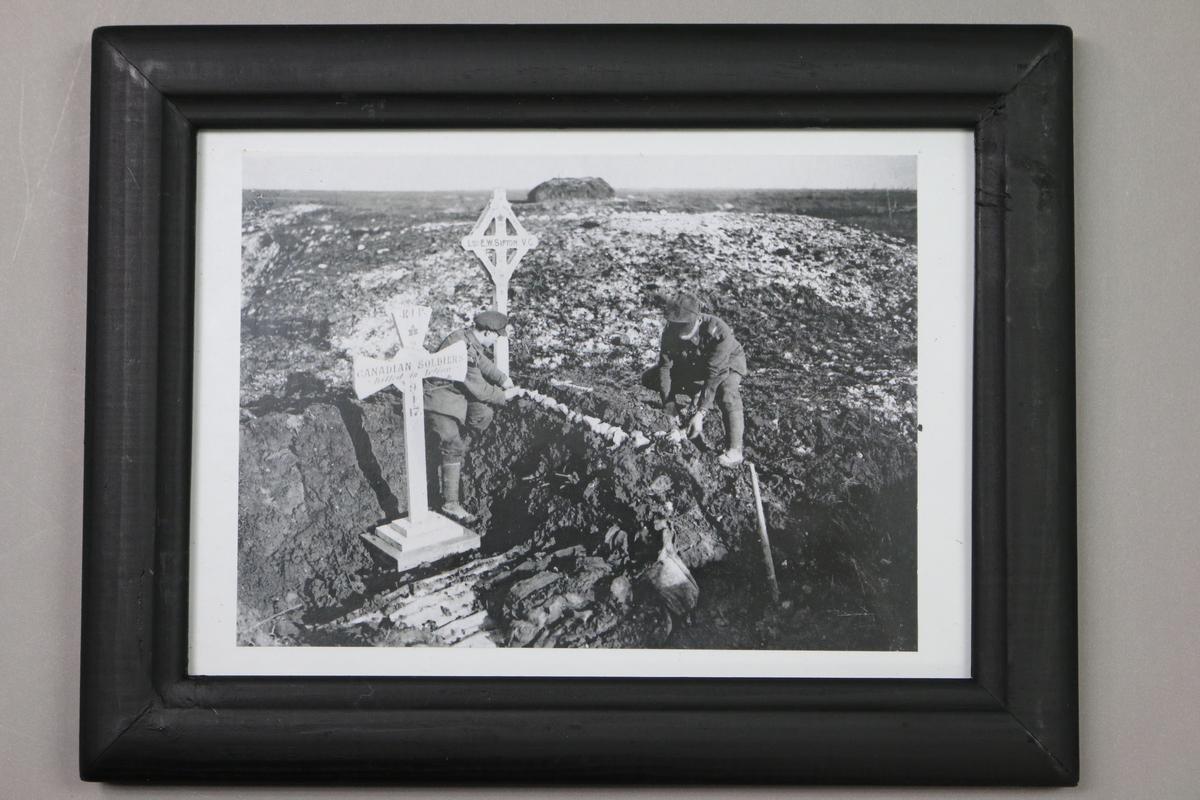Lance-Sergeant Ellis Wellwood Sifton, VC and Vimy Ridge

Portrait of Lance-Sergeant Ellis Sifton, VC, date unknown.
Born in Wallacetown in Elgin County, Ontario, Lance-Sergeant Ellis Wellwood Sifton was twenty-one years old when he enlisted with the Canadian Expeditionary Forces in 1914 and assigned to the 18th Battalion from Central Ontario. The battalion had members of militia units and newly enrolled from London, Windsor, Fergus, Woodstock, Chatham. Strathroy, Sarnia, Waterloo, Galt and Berlin (now called Kitchener). Before World War I, he had no previous military training but had five years of shooting experience at the Wallacetown Rifle Association. He was promoted to Lance-Corporal before he went overseas in April 1915.
Upon arrival in England the 2nd Contingent was formed as the 2nd Canadian Division and commenced intensive training to prepare them for combat on the Continent. The 18th Battalion arrived in France on 18 September 1915 and by 27 September were in the trenches for the first time near the Messines sector. Over the next 18 months Sifton and the 2nd Division were in and out of the trenches at St. Elio Craters, Courcellette in the Somme, Ypres and Ancre Heights.
In February 1917, the Canadian Corps comprising of four infantry divisions was charged with taking Vimy Ridge, a northwestern high point near the city of Arras, France, from which the Douai Plain could be seen. The Germans controlled the ridge, and previous attempts to take it by the French and the British had failed miserably. The capture of the ridge was part of the British plan taking place in the Scarpe River Valley that would push the German army out of the Arras sector. This task would be led by the Canadian Corps commanded by Lieutenant General Julian Byng. The offensive would start from the trenches near Écurie. The soldiers from all four divisions were already familiar with the landscape due to months of preparation, including trench raids and simulated ground attacks. Tactical lessons learned from failures at the Somme and Verdun earlier in the war would be implemented in this operation. The infantry knew their objectives and how to deal with any obstacles they may face in No-Man's Land. The soldiers of the 18th Battalion moved into the front trenches on 4 April 1917, where a tunnel had been dug from the Battalion’s position to approximately twenty metres from the German front line. The battalion of six-hundred men moved to the jumping-off trenches on the night before the attack. On the morning of 9 April, the Canadian Corps were ready to advance. The platoons were spread out across the trenches to reduce casualties in case of artillery fire. While the 1st and 2nd Divisions of the Canadian Corps were to traverse four kilometres over flat ground, the thousand metres of ground covered by the 3rd and 4th Divisions was sloped and broken due to previous mine detonations. With the 18th Battalion, Lance-Sergeant Sifton would help to capture the German Black Line, or the defensive line that was closest to the Canadian front line. When the Canadians entered No Man’s Land at 5:30 a.m., sleet made crossing the muddy terrain difficult. However, it prevented the Germans from seeing the advancing Canadians. A creeping barrage of artillery fire, which used 38,000 metric tons of ammunition in the attack, was followed closely by the attacking soldiers. These infantrymen were able to successfully breach the German front line trench. Taking the second trench line proved more difficult, as German grenadiers fought back and opposing machine guns let off suppressive fire. Lance-Sergeant Sifton noticed that these machine-gun crews were stopping the advancement of his C Company, so he moved back from his position to help them. He used his bayonet to take out the men manning the gun. Even though other German soldiers were intent on regaining control of the machine-gun, Sifton stood his ground against them, even using his rifle to physically beat them back. Sifton was shot before “C” Company could reach him. Word came to the battalion headquarters at 6:05a.m. that most of Vimy Ridge had been successfully captured with ‘comparatively’ light casualties, though the Germans would not withdraw entirely until the next day. It took 4th Division on the left three more days to capture their part of the ridge.
For his “conspicuous gallantry and devotion to duty,” Sifton received the Victoria Cross posthumously. Sifton was given a battlefield gravesite after Vimy Ridge before being reinterred in Lichfield Crater Cemetery in Neuville-Saint-Vaast, France. This cemetery is a Commonwealth War Graves Commission mass grave, one of many constructed after the war to honour those who lost their lives on the battlefield. At the cemetery, a plaque with all the names of those buried there marks the burial site.
Story by Nicole Pillon, Canada Summer Jobs 2022 participant
with The Essex and Kent Scottish Regiment Association
Source
- Duty Nobly Done, The History of The Essex and Kent Scottish Regiment by Sandy Antal and Kevin R. Shackleton (2006): Chapter 5, 6, Appendix 5

War grave of Lance-Sergeant Ellis Sifton, VC, after he was killed at the Battle of Vimy Ridge in 1917.
